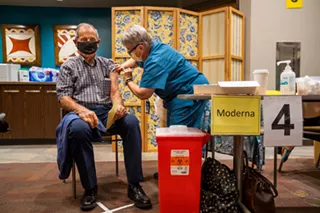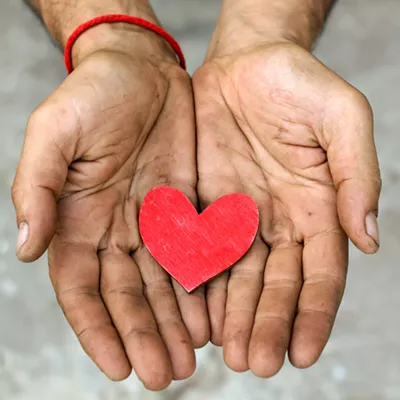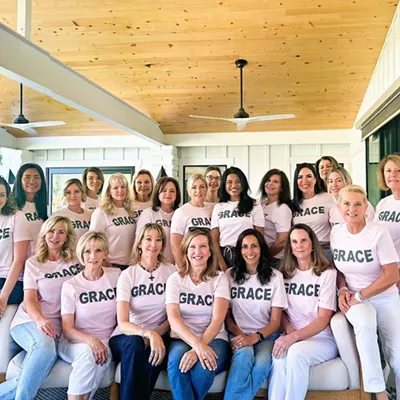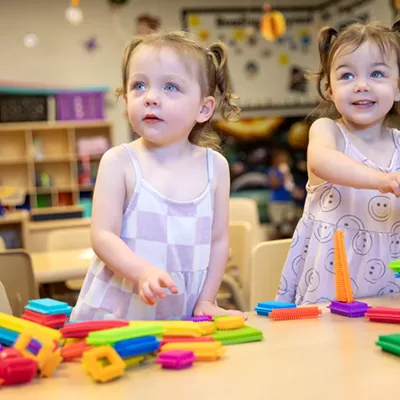Almost as fast as the nation entered quarantine more than a year ago, businesses and governments are now lifting mask mandates and COVID restrictions. Last month, the CDC announced those who are fully vaccinated no longer need to wear a mask or physically distance in any setting, except where required by state or local rules. This new guidance includes activities like shopping and eating, and allows for domestic flights without testing.
Although a full vaccination removes most mask requirements, the CDC acknowledges vaccinations don't prevent all cases, and says indoor events pose a "minimal risk," but not no risk at all.
"I think it's completely appropriate," said Kelly Reynolds, a professor at the University of Arizona's College of Public Health. "We have a lot of evidence now that vaccinated people are not really transmitting the virus to others, and they're protected themselves. It seems like an appropriate guideline to loosen those restrictions. Obviously there's challenges with knowing who is vaccinated and who is not, so the key point here is vaccination."
Reynolds, PhD, is department chair for UA's Department of Community, Environment and Policy. She also serves as director of UA's Environment, Exposure Science and Risk Assessment Center, and has researched water quality, food safety and disease transmission for decades.
Reynolds still urges caution because of unknowns regarding the vaccine, and the large portion of people unvaccinated. According to the Arizona Department of Health Services, more than 40% of Arizonans are now vaccinated, equaling 3 million people who have received at least one dose of a COVID vaccine. Reynolds lists the incidence of vaccine "breakthrough" cases, the uncertain longevity of the vaccine, and how compromised people build immunity as some of the most important remaining questions.
"One of the ways the CDC makes decisions about their recommendations is by looking at the probabilities in the population, not necessarily these smaller groups that have rarer cases that don't follow the general norm," Reynolds said. "We still have a ways to go, and I think that's where the difficulty comes in. If you're not vaccinated, then you still really need to adhere to a lot of protections. And now even more so, because other people are not going to be masked. If you're not vaccinated and not wearing a mask, perhaps going with the peer group, you're putting yourself at higher risk."
The CDC has stated that those fully vaccinated can resume the activities they did prior to the pandemic, but still wear a mask when required and still watch out for symptoms of COVID-19.
"Vaccines are good, but not perfect," says Joe Gerald, PhD, an associate professor in the UA College of Public Health who has operated a weekly COVID report throughout the pandemic. "Through the course of the pandemic, we should have viewed outdoor events as safer than we did. Of course, the greatest risk is in places like gyms, restaurants, bars, nightclubs and churches. These places have drawn a large number of transmissions. But if you're vaccinated, the outdoors are safe, and people need to get outdoors."
Throughout the pandemic, there has been an emphasis on sanitizing surfaces to avoid the hand-to-surface-to-face route of infection. However, Reynolds says the virus really doesn't survive well on surfaces, and so the efforts to disinfecting surfaces should not be people's primary focus.
"There's so much we know now that we didn't know a year ago. It was summertime a year ago when Arizona was leading the nation in the number of cases and hospitalizations, and that was largely because we all went inside when things started heating up. Something we learned that is validated by real life is how the virus circulates very well in indoor environments. There's new evidence now that when you're indoors and there's good air circulation, it might not matter if you're six feet apart or 60 feet apart: the virus is being spread in indoor environments," Reynolds said. "Circulating air can dilute the virus, but you need to get it out of the building. There needs to be air exchange, not just circulation."
Though sanitizing surfaces isn't the primary method of reducing COVID, it has proved effective against other contagions like influenza and norovirus. In fact, the CDC estimates that 22,000 Americans died from the flu in the 2019-2020 season, more than 10,000 fewer than each of the previous three flu seasons.
"There has been a cultural shift in terms of recognizing the importance of hygiene and social distancing. Even though we know in indoor environments social distancing is not that effective because of the air-circulation issue, avoiding large crowds in general does reduce the risk of person-to-person transmission," Reynolds said. "But some of those habits have adverse effects, like social isolation, anxiety and depression. The loss of human contact can really affect quality of life. So I think we're really going to be doing a lot of reflecting back on this pandemic and finding that right balance between reducing risk of infection and the relative risk of social isolation."
While removing masking requirements for fully vaccinated individuals is a welcome sight, the CDC still has directives for those unvaccinated, and plans to keep those even after states fully roll back their most basic COVID protocols.
"The greatest barrier now is the hesitancy for getting the vaccine," Reynolds said. "Early on, people were standing in lines and doing whatever they could to get the vaccine, and we've gotten the vaccine to those people. Now we have the vaccine waiting to be delivered, and there's not a big line of people waiting to get them. So the message really is that the vaccine has been the big difference in reducing the restrictions and being able to get people back together. So we want to get more people to trust the vaccine. The data is high efficacy and low side-effects."








